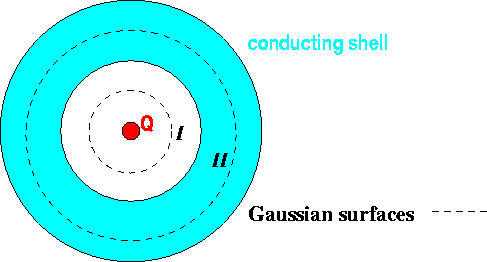
Charge near conductors
To see what happens when charges are placed close to conductors, consider a spherical conducting shell which is neutral, but which surrounds a point charge Q that is placed at its center.

The field inside the shell must be the same as for a free charge, because a Gaussian surface I can be drawn around the charge, inside the conductor, and the field leaving must be given by Gauss's law.
Inside the conductor the field must be zero because there is never a field inside a perfect conductor. Therefore if I draw Gaussian surface II, I will see that the net charge inside the surface must be zero, hence there must be a charge -Q spread out over the inside surface of the shell.
Finally, since the shell is neutral, there must be a charge +Q spread evenly over its outer surface.
If we consider a more general problem in which the shell carries a total charge Q', the arguments given above still apply, so the total charge on the outer surface becomes (Q + Q'). When you are called upon to solve a problem of this type, it is best to work from the center outward.